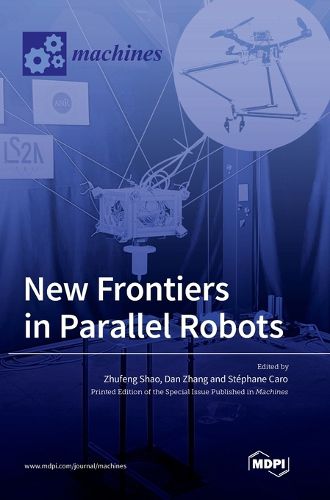Readings Newsletter
Become a Readings Member to make your shopping experience even easier.
Sign in or sign up for free!
You’re not far away from qualifying for FREE standard shipping within Australia
You’ve qualified for FREE standard shipping within Australia
The cart is loading…






This title is printed to order. This book may have been self-published. If so, we cannot guarantee the quality of the content. In the main most books will have gone through the editing process however some may not. We therefore suggest that you be aware of this before ordering this book. If in doubt check either the author or publisher’s details as we are unable to accept any returns unless they are faulty. Please contact us if you have any questions.
The parallel robot, a kind of robot that utilizes multiple closed-loop branch chains jointly connecting and driving the moving platform, is an important part of modern robotics, with outstanding advantages of high stiffness, high precision and high speed. Parallel robots can efficiently change performance through the configuration of synthesis and design. The rich variety of configurations and the existence of a large number of passive joints also brought abundant challenges and research topics to the modeling, optimization, calibration and trajectory planning of parallel robots. This book focuses on the research frontiers of parallel robots from fundamental theory to application technology. Special attention is paid to kinematics/dynamics modeling, error modeling and calibration, impedance control and the machining stability of parallel robots. Notably, a considerable portion of the book focuses on cable-driven parallel robots (CDPRs) that integrate cable-driven kinematic chains and parallel mechanism theory. CDPRs inherit the high dynamics and heavy load capacities of parallel robots and significantly improve the workspace, cost and energy efficiency simultaneously, following the cutting-edge trend of rigid-flexible fusion.
$9.00 standard shipping within Australia
FREE standard shipping within Australia for orders over $100.00
Express & International shipping calculated at checkout
This title is printed to order. This book may have been self-published. If so, we cannot guarantee the quality of the content. In the main most books will have gone through the editing process however some may not. We therefore suggest that you be aware of this before ordering this book. If in doubt check either the author or publisher’s details as we are unable to accept any returns unless they are faulty. Please contact us if you have any questions.
The parallel robot, a kind of robot that utilizes multiple closed-loop branch chains jointly connecting and driving the moving platform, is an important part of modern robotics, with outstanding advantages of high stiffness, high precision and high speed. Parallel robots can efficiently change performance through the configuration of synthesis and design. The rich variety of configurations and the existence of a large number of passive joints also brought abundant challenges and research topics to the modeling, optimization, calibration and trajectory planning of parallel robots. This book focuses on the research frontiers of parallel robots from fundamental theory to application technology. Special attention is paid to kinematics/dynamics modeling, error modeling and calibration, impedance control and the machining stability of parallel robots. Notably, a considerable portion of the book focuses on cable-driven parallel robots (CDPRs) that integrate cable-driven kinematic chains and parallel mechanism theory. CDPRs inherit the high dynamics and heavy load capacities of parallel robots and significantly improve the workspace, cost and energy efficiency simultaneously, following the cutting-edge trend of rigid-flexible fusion.